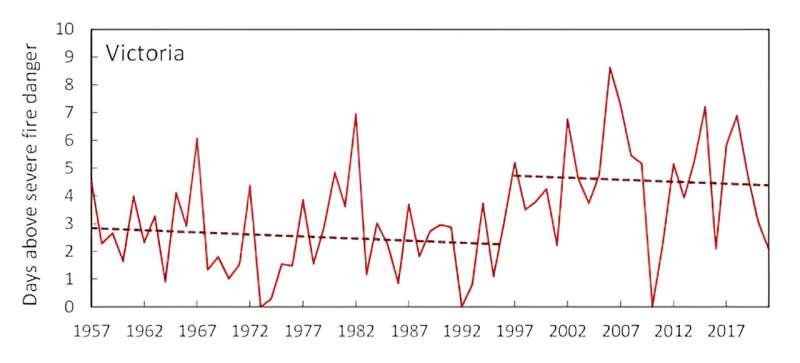
Our research shows almost everywhere in Australia is now in a different fire climate than it was just 20 years ago, with falling relative humidity a key factor. Previous research has also identified these sudden jumps in fire danger.
What caused fire climates to shift? Conventional scientific wisdom assumes the climate’s response to increasing emissions is gradual and linear. When rapid change happens, it’s often thought to be due to climate variability. But that’s not what happened here.
Fire weather is calculated using the Forest Fire Danger Index, which takes into account vegetation dryness, windspeed, temperature and relative humidity.
We tracked changes in this fire danger index over that 64-year period across all states and the Northern Territory. We also looked at distinct sub regions such as southwest Australia. What we found was startling. Rather than a linear increase, fire regimes tracked along a similar line—and then suddenly jumped. For most states and territories, that happened around the year 2000.
There is no evidence for a long-term trend. Instead, the data shows a shift from one stable fire climate regime to another.
Why did fire climates shift so abruptly?
That’s the big question.
To find out, we analyzed all the available input variables for regime shifts and tested their influence on the results. We found wind speed was not a factor. Changes in rainfall had little effect.
So what was it? We found the main driver was relative humidity in combination with higher daily temperatures during the fire season. Recently, we examined global humidity data and found large-scale downward shifts in humidity. In the Southern Hemisphere, that happened in 2002. In the Northern Hemisphere, it happened in 1999.
Humidity reductions in each region of Australia were closely followed by shifts to higher fire season maximum temperatures, amplified by soils drying out.